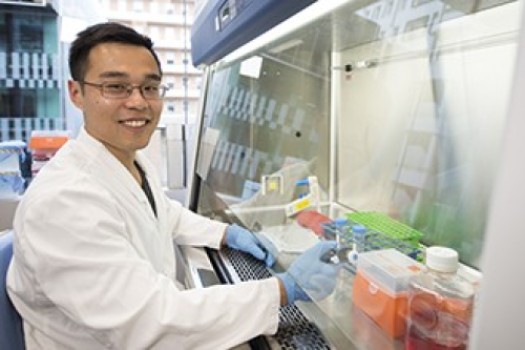
Melbourne researchers have discovered that cartilage plays an active role in the destruction and remodelling of joints seen in rheumatoid arthritis, rather than being an ‘innocent bystander’ as previously thought.
Dr Tommy Liu, Professor Ian Wicks, Dr Kate Lawlor, Dr Ben Croker and colleagues from the Walter and Eliza Hall Institute made the discovery while investigating the role of the protein SOCS3 in controlling inflammation during rheumatoid arthritis. The study was published in the journal Arthritis and Rheumatology.
Rheumatoid arthritis affects more than 400,000 Australians, causing chronic pain and inflammation in joints such as those in the hands and feet, as well as knees and hips. Over time, rheumatoid arthritis can destroy the cartilage that lubricates and cushions the joints, while bones can be remodelled, leading to disfigurement, pain and reduced mobility.
Dr Liu said cartilage was previously thought to be a victim of an overzealous immune system rather than playing an active role in rheumatoid arthritis. “Autoimmune diseases such as rheumatoid arthritis are the result of the immune system wrongly attacking normal, healthy tissue,” he said. “Our study has shown for the first time that cartilage participates in the production of inflammation-signalling chemicals and contributes to its own destruction.”
The study investigated how the molecules — known as suppressors of cytokine signalling (SOCS) molecules — that control the flow of chemical messages within and between cells regulate inflammation in rheumatoid arthritis. When the researchers created a model that lacked SOCS3 molecules in the cartilage, they found that tissue degradation increased.
“Without SOCS3, cartilage cells produced enzymes that drove tissue degradation and increased inflammation by releasing signalling molecules that triggered an increased autoimmune response,” Dr Liu said. “We also found that cartilage could produce a protein called RANKL that triggers bone remodelling.
“These results show that cartilage is not an innocent bystander that gets damaged as a result of rheumatoid arthritis, but instead plays an active role in disease progression.”
There is no cure for rheumatoid arthritis, and few treatments are effective in slowing the onset of the disease. “Targeting the action of these inflammatory chemical messages could boost the efficacy of current treatments,” Dr Liu said.
Story Source:
The above story is based on materials provided by Walter and Eliza Hall Institute. Note: Materials may be edited for content and length.
Journal Reference:
- Xiao Liu, Ben A. Croker, Ian K. Campbell, Stephanie J. Gauci, Warren S. Alexander, Brett A. Tonkin, Nicole C. Walsh, Edmond M. Linossi, Sandra E. Nicholson, Kate E. Lawlor, Ian P. Wicks. Key Role of Suppressor of Cytokine Signaling 3 in Regulating gp130 Cytokine-Induced Signaling and Limiting Chondrocyte Responses During Murine Inflammatory Arthritis. Arthritis & Rheumatology, 2014; 66 (9): 2391 DOI: 10.1002/art.38701
